Socioeconomic Impact on Urban Resilience against Flood Damage
Abstract
:1. Introduction
2. Methodology
2.1. Evaluation of Resilience
2.1.1. Urban Resilience
2.1.2. Evaluation of Each Attribute
- Robustness
- Resourcefulness
- Redundancy
- Rapidity
- Urban Resilience
2.2. Evaluation of Socioeconomic Cost
2.2.1. Valuation of Productive Activities
2.2.2. Traffic Congestion Costs
3. Results
3.1. Urban Resilience on the Pilot Area
3.2. Socioeconomic Cost
3.2.1. Valuation of Productive Activities (VPA)
3.2.2. Traffic Congestion Cost
3.3. Relationship between Urban Resilience and Socioeconomic Cost
4. Discussion and Conclusions
- In the event of a flood, the resilience of each city varies, which is primarily due to the structural characteristics of the cities and their evacuation and response capabilities. For example, despite having similar levels of facility damage (SI), there was a significant difference in evacuation capability (RA or SR), which was expected to indicate critical disparities in the damage and recovery process due to flooding.
- Each attribute value of resilience against flooding and socioeconomic damage is greatly influenced by the structural characteristics and social capabilities. In particular, it was analyzed that even if similar resilience outcomes are derived, socioeconomic damage can vary depending on the specific attribute values. For instance, the capacity to evacuate, such as RA, and regional population sizes influenced the scale of socioeconomic cost differently on the final value of urban resilience.
- With the economic analysis, the expected benefits and costs of PSHP were estimated including the operation and maintenance. Urban resilience would indicate a foundational measure for establishing response strategies for the rapid recovery of cities after floods. The analysis method for each attribute value of resilience and socioeconomic cost in this study can provide useful information to decision-makers and stakeholders, contributing to minimizing and mitigating damage caused by floods and enhancing resilience.
Author Contributions
Funding
Institutional Review Board Statement
Informed Consent Statement
Data Availability Statement
Conflicts of Interest
References
- Hettiarachchi, S.; Wasko, C.; Sharma, A. Increase in flood risk resulting from climate change in a developed urban watershed–the role of storm temporal patterns. Hydrol. Earth Syst. Sci. 2018, 22, 2041–2056. [Google Scholar] [CrossRef]
- Huong, H.T.L.; Pathirana, A. Urbanization and climate change impacts on future urban flooding in Can Tho city, Vietnam. Hydrol. Earth Syst. Sci. 2013, 17, 379–394. [Google Scholar] [CrossRef]
- Jiang, T.; Su, B.; Huang, J.; Zhai, J.; Xia, J.; Tao, H.; Wang, Y.; Sun, H.; Luo, Y.; Zhang, L.; et al. Each 0.5 C of warming increases annual flood losses in China by more than US $60 billion. Bull. Am. Meteorol. Soc. 2020, 101, E1464–E1474. [Google Scholar] [CrossRef]
- Armstrong, S.B.; Lazarus, E.D.; Limber, P.W.; Goldstein, E.B.; Thorpe, C.; Ballinger, R.C. Indications of a positive feedback between coastal development and beach nourishment: Coastal development beach nourishment. Earths Future 2016, 4, 626–635. [Google Scholar] [CrossRef]
- Chen, Y.; Wang, Z.; Liu, Z.; Zhu, D. 1D-2D Coupled Numerical Model for Shallow-Water Flows. J. Hydraul. Eng. 2012, 138, 122–132. [Google Scholar] [CrossRef]
- Sajjad, M.M.; Wang, J.; Abbas, H.; Ullah, I.; Khan, R.; Ali, F. Impact of Climate and Land-Use Change on Groundwater Resources, Study of Faisalabad District, Pakistan. Atmosphere 2022, 13, 1097. [Google Scholar] [CrossRef]
- Wildavsky, A.B. Searching for Safety, 1st ed.; Transaction Publishers: New Brunswick, NJ, USA, 1988. [Google Scholar]
- Manyena, S.B. The concept of resilience revisited. Disasters 2006, 30, 434–450. [Google Scholar] [CrossRef]
- Nelson, D.R.; Adger, W.N.; Brown, K. Adaptation to environmental change: Contributions of a resilience framework. Annu. Rev. Environ. Resour 2007, 32, 395–419. [Google Scholar] [CrossRef]
- Mensah, H.; Amponsah, O.; Opoku, P.; Ahadzie, D.K.; Takyi, S.A. Resilience to climate change in Ghanaian cities and its implications for urban policy and planning. SN Soc. Sci. 2021, 1, 118. [Google Scholar] [CrossRef]
- Bulti, D.T.; Girma, B.; Megento, T.L. Community flood resilience assessment frameworks: A review. SN Appl. Sci. 2019, 1, 1663. [Google Scholar] [CrossRef]
- Jeon, E.; Byun, B. A Study on the Development and Application of Community Resilience Evaluation Indicators for Responding to Climate Change. Geogr. J. Korea 2017, 51, 47–58. [Google Scholar]
- Jeong, C.J.; Kim, D.H.; Yoo, H.J.; Lee, S.O. Selection of Elevation Models for Flood Inundation Map Generation in Small Urban Stream: Case Study of Anyang Stream. Adv. Technol. Innov. 2024, 9, 28–41. [Google Scholar] [CrossRef]
- Bruneau, S.E.; Chang, R.T.; Eguchi, G.C.; Lee, T.D.; O’Rourke, A.M.; Reinhorn, M.; Shinozuka, K.; Tierney, W.A.; Wallace, D. Von Winterfeldt. A Framework to Quantitatively Assess and Enhance the Seismic Resilience of Communities. Earthq. Spectra 2003, 19, 733–752. [Google Scholar] [CrossRef]
- Vugrin, E.D.; Warren, D.E.; Ehlen, M.A.; Camphouse, R.C. A Framework for Assessing the Resilience of Infrastructure and Economic Systems. In Sustainable and Resilient Critical Infrastructure Systems; Springer: Berlin/Heidelberg, Germany, 2010; pp. 87–95. [Google Scholar]
- Yu, S.Y.; An, H.U.; Kim, S.W.; Lee, K.H.; Kim, J.M. Impact Analysis of Disaster Recovery Using Resilience Cost Index. J. Environ. Policy Adm. 2014, 22, 31–54. [Google Scholar] [CrossRef]
- Langkulsen, U.; Rwodzi, D.T.; Cheewinsiriwat, P.; Nakhapakorn, K.; Moses, C. Socio-economic resilience to floods in coastal areas of Thailand. Int. J. Environ. Res. Public Health 2022, 19, 7316. [Google Scholar] [CrossRef] [PubMed]
- Cutter, S.L.; Burton, C.G.; Emrich, C.T. Disaster resilience indicators for benchmarking baseline conditions. J. Homel. Secur. Emerg. Manag. 2010, 7, 5–8. [Google Scholar] [CrossRef]
- Bertilsson, L.; Wiklund, K.; Tebaldi, I.M.; Rezende, O.M.; Veról, A.P.; Miguez, M.G. Urban flood resilience–A multi-criteria index to integrate flood resilience into urban planning. J. Hydrol. 2019, 573, 970–982. [Google Scholar] [CrossRef]
- Timmerman, P. Vulnerability, Resilience and the Collapse of Society; Environmental Monograph No. 1; Institute for Environmental Studies, Toronto University: Toronto, ON, Canada, 1981. [Google Scholar]
- Park, H.J.; Song, S.; Kim, D.H.; Lee, S.O. Network analysis for assessing urban resilience from the perspective of urban flooding: Case study of Seoul, Korea. J. Korea Water Resour. Assoc. 2024, 57, 371–383. [Google Scholar]
- Tierney, K.; Bruneau, M. Conceptualizing and measuring resilience: A key to disaster loss reduction. TR News 2007, 250, 14–17. [Google Scholar]
- Huck, A.; Monstadt, J.; Driessen, P. Building urban and infrastructure resilience through connectivity: An institutional perspective on disaster risk management in Christchurch, New Zealand. Cities 2020, 98, 102573. [Google Scholar] [CrossRef]
- Jeong, K.H.; Yoon, J.E. A Profile of the Productive Activities of Korean Older Persons and Economic Valuation. Health Welf. Policy Forum 2011, 161, 48–57. [Google Scholar]
- Seoul Open Data Plaza. Available online: https://data.seoul.go.kr/# (accessed on 25 February 2024).
- Open Government Data. Available online: https://www.data.go.kr/data/15082063/fileData.do (accessed on 25 February 2024).
- Cheon, S.H.; Lee, C.Y. Estimation for Road Traffic Congestion Costs in 2020; Technical Report AR-22-20; Korea Transport Institute: Sejong, Republic of Korea, 2022. [Google Scholar]
- Lee, S.S.; Kim, D.K.; Seo, J.W. A study on the social cost estimation of the tunnel section enlargement method considering traffic flow. J. Korean Tunn. Undergr. Space Assoc. 2015, 17, 487–497. [Google Scholar] [CrossRef]
- Cho, H.S.; Park, I.K.; Lee, D.M.; Park, J.S. Improvement of the Estimation Method for Traffic Congestion Costs; Technical Report 2007-07; The Korea Transport Institute: Sejong, Republic of Korea, 2007. [Google Scholar]
- Kim, G.H.; Kim, G.T. Development of a flood damage estimation model (K-FRM) analysis tool to support flood control economic feasibility analysis. Water Future 2021, 54, 14–22. [Google Scholar]
- Huizinga, J.; Moel, D.H.; Szewczyk, W. Global Flood Depth-Damage Functions: Methodology and the Database with Guidelines; Joint Research Centre, Technical Report EUR 28552 EN; European Commission: Brussels, Belgium, 2017. [Google Scholar]
- Ministry of the Interior and Safety. Available online: https://www.mois.go.kr/frt/bbs/type001/commonSelectBoardArticle.do?bbsId=BBSMSTR_000000000012&nttId=59077#none (accessed on 25 February 2024).

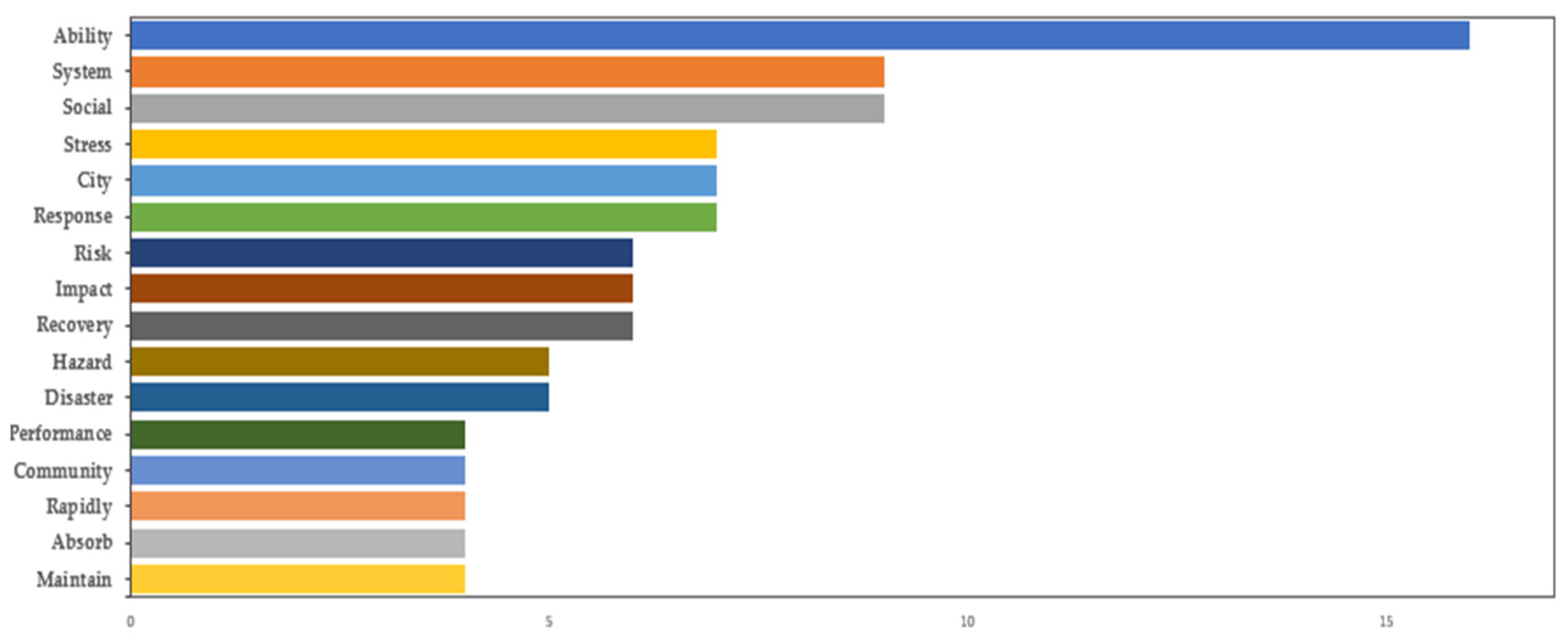
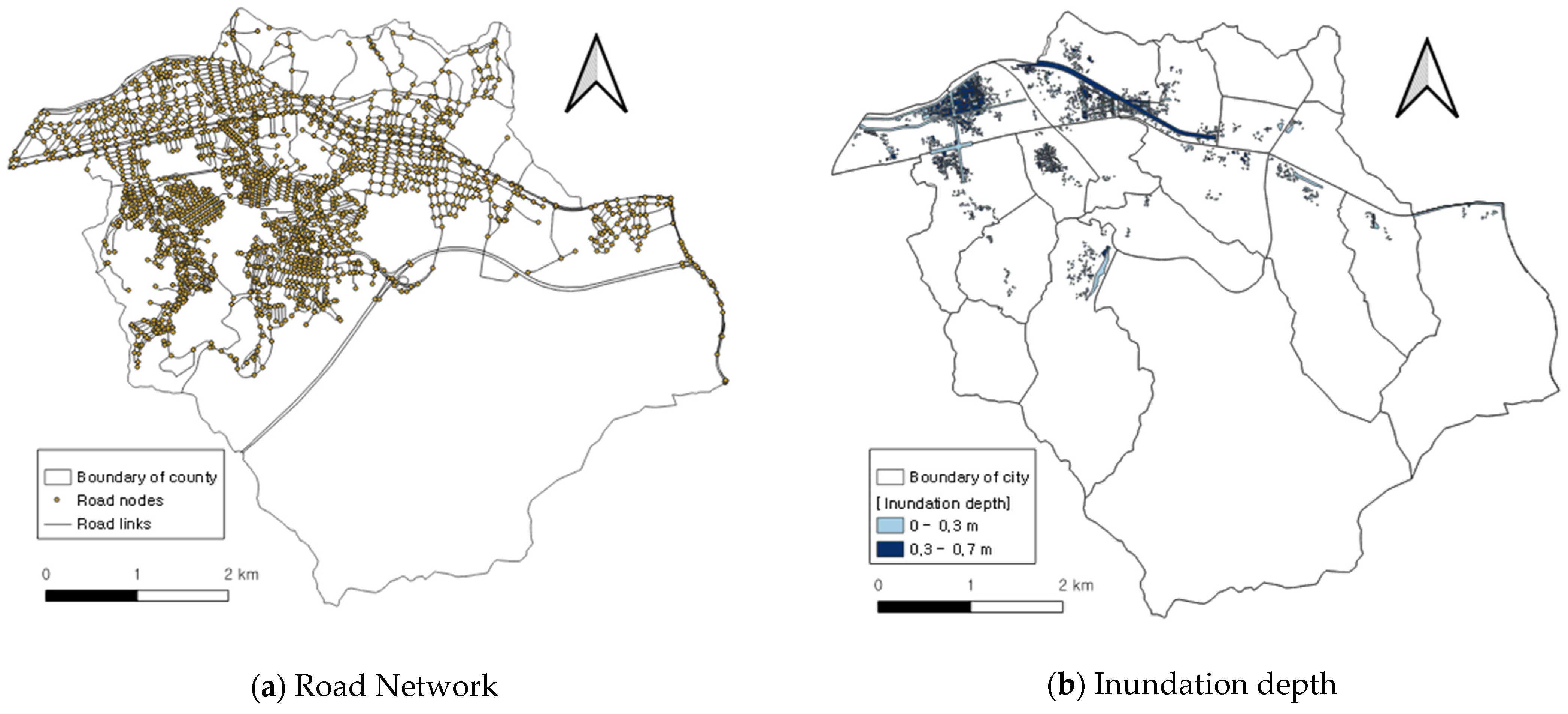

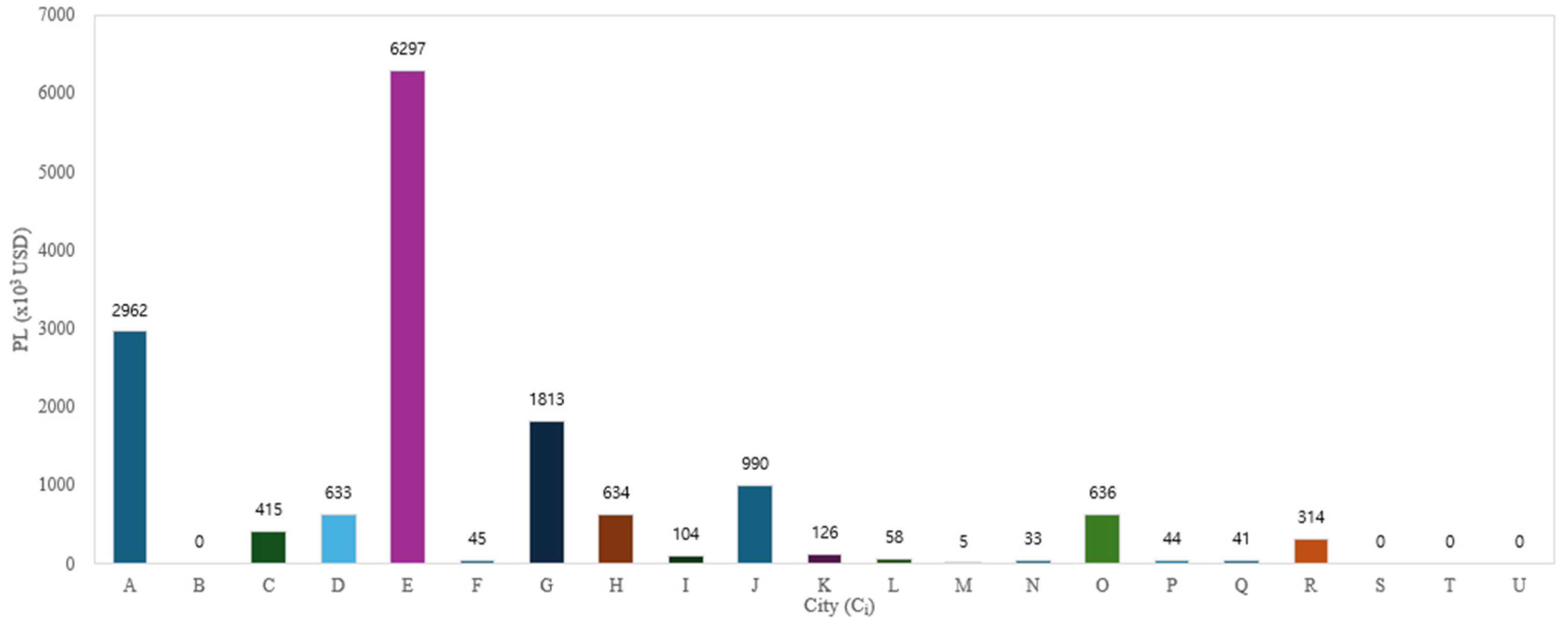
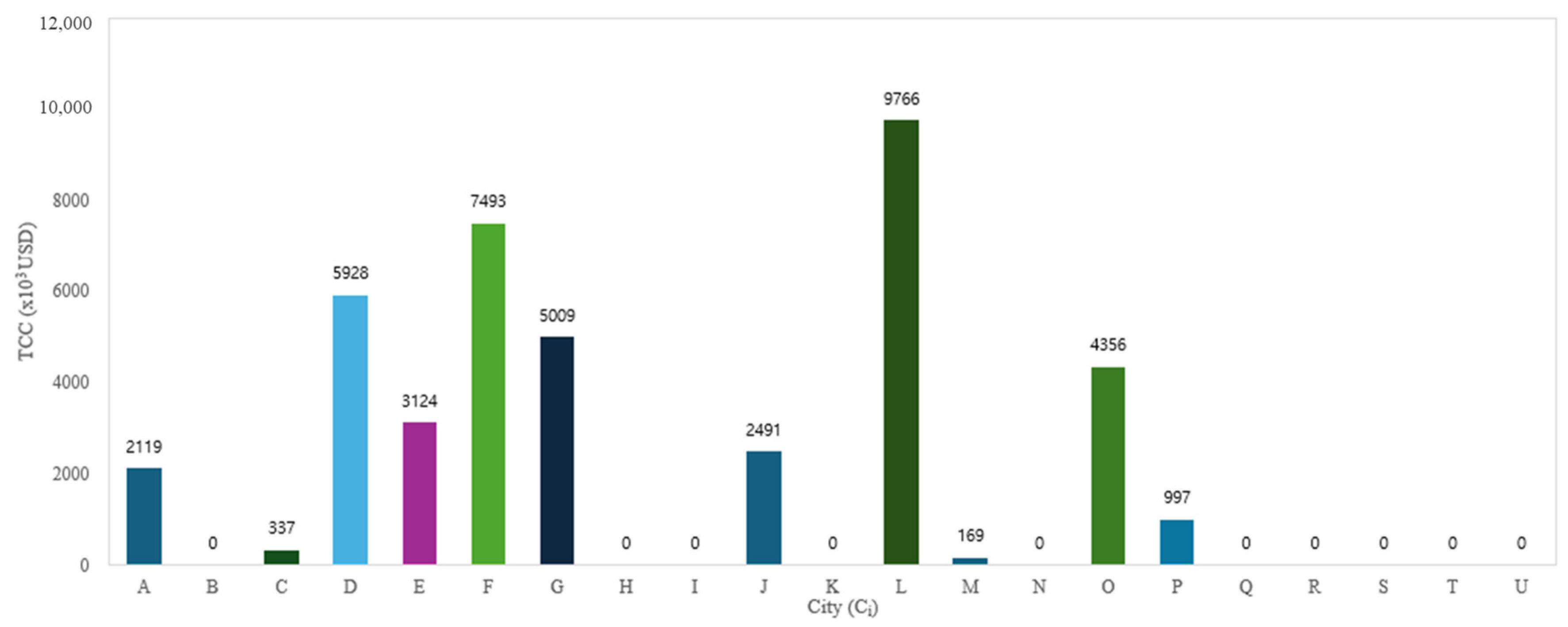
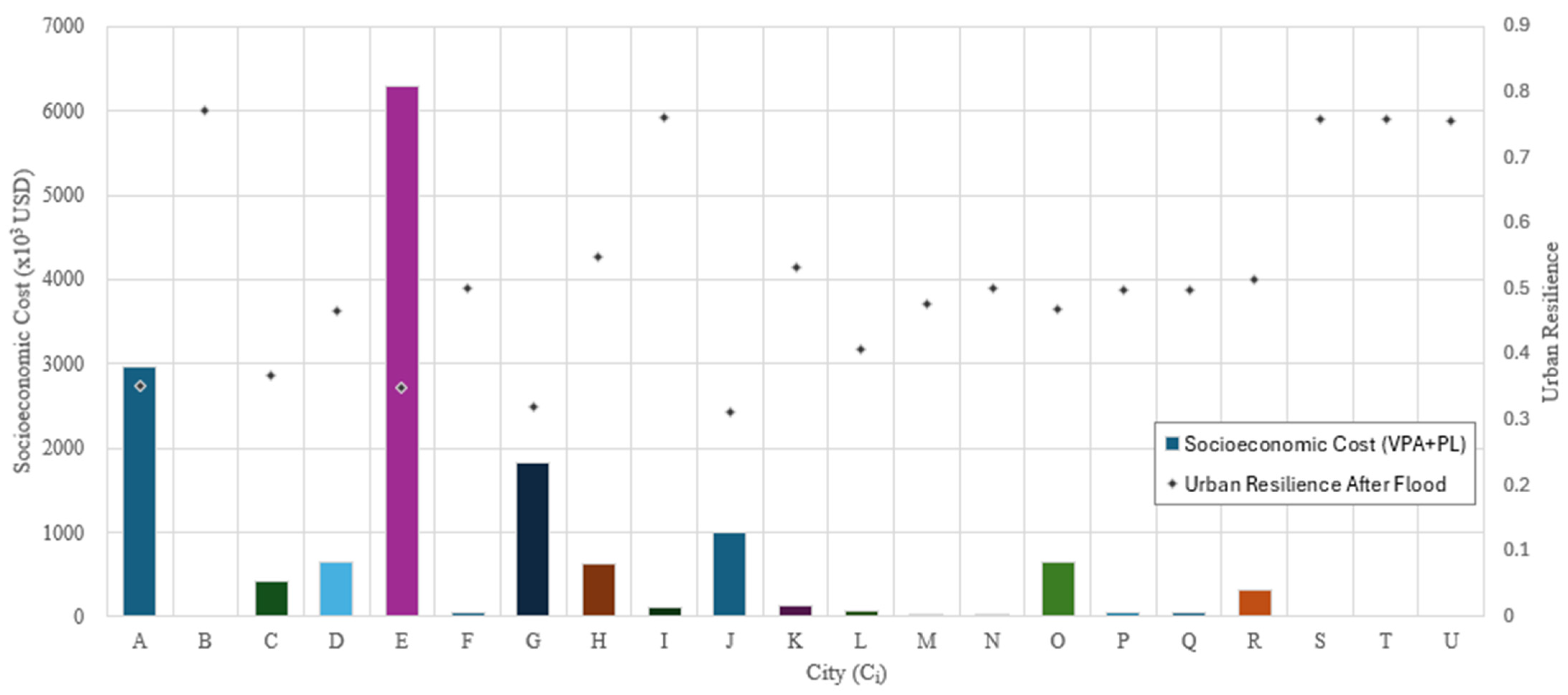
| Decile | Annual Average Salary Income (USD) | Ratio | Estimated Hourly Wage (USD) |
|---|---|---|---|
| 1 | 2375 | 1.00 | 7 |
| 2 | 7695 | 3.24 | 24 |
| 3 | 13,205 | 5.56 | 41 |
| 4 | 17,480 | 7.36 | 54 |
| 5 | 20,853 | 8.78 | 65 |
| 6 | 25,270 | 10.64 | 79 |
| 7 | 31,018 | 13.06 | 97 |
| 8 | 39,401 | 16.59 | 123 |
| 9 | 52,963 | 22.30 | 165 |
| 10 | 88,944 | 37.45 | 277 |
| Cost | Car | Bus | Truck |
|---|---|---|---|
| Fixed value (USD) | 0 | 19.705 | 22.222 |
| Variable value (USD) | 17.915 | 81.288 | 0 |
| Time value (USD) | 0.310 | 0.332 | 0.332 |
| Fuel consumption model (L/km) |
| City | SI | RA | SR | DP | R | |
|---|---|---|---|---|---|---|
| SIb | SIr | |||||
| A | 1.000 | 1.000 | 1.000 | 1.000 | 0.119 | 0.780 |
| B | 1.000 | 1.000 | 1.000 | 1.000 | 0.084 | 0.771 |
| C | 1.000 | 1.000 | 1.000 | 1.000 | 0.071 | 0.768 |
| D | 1.000 | 1.000 | 1.000 | 1.000 | 0.058 | 0.765 |
| E | 1.000 | 1.000 | 1.000 | 1.000 | 0.058 | 0.764 |
| F | 1.000 | 1.000 | 1.000 | 1.000 | 0.057 | 0.764 |
| G | 1.000 | 1.000 | 1.000 | 1.000 | 0.056 | 0.764 |
| H | 1.000 | 1.000 | 1.000 | 1.000 | 0.051 | 0.763 |
| I | 1.000 | 1.000 | 1.000 | 1.000 | 0.048 | 0.762 |
| J | 1.000 | 1.000 | 1.000 | 1.000 | 0.047 | 0.762 |
| K | 1.000 | 1.000 | 1.000 | 1.000 | 0.046 | 0.761 |
| L | 1.000 | 1.000 | 1.000 | 1.000 | 0.045 | 0.761 |
| M | 1.000 | 1.000 | 1.000 | 1.000 | 0.045 | 0.761 |
| N | 1.000 | 1.000 | 1.000 | 1.000 | 0.044 | 0.761 |
| O | 1.000 | 1.000 | 1.000 | 1.000 | 0.039 | 0.760 |
| P | 1.000 | 1.000 | 1.000 | 1.000 | 0.039 | 0.760 |
| Q | 1.000 | 1.000 | 1.000 | 1.000 | 0.038 | 0.760 |
| R | 1.000 | 1.000 | 1.000 | 1.000 | 0.034 | 0.759 |
| S | 1.000 | 1.000 | 1.000 | 1.000 | 0.032 | 0.758 |
| T | 1.000 | 1.000 | 1.000 | 1.000 | 0.030 | 0.758 |
| U | 1.000 | 1.000 | 1.000 | 1.000 | 0.020 | 0.755 |
| City | SI | RA | SR | DP | R | Change in City Resilience (%) | |
|---|---|---|---|---|---|---|---|
| SIb | SIr | ||||||
| B | 1.000 | 1.000 | 1.000 | 1.000 | 0.084 | 0.771 | 0.000 |
| I | 0.995 | 1.000 | 1.000 | 1.000 | 0.048 | 0.761 | 0.075 |
| S | 1.000 | 1.000 | 1.000 | 1.000 | 0.032 | 0.758 | 0.000 |
| T | 1.000 | 1.000 | 1.000 | 1.000 | 0.030 | 0.758 | 0.000 |
| U | 1.000 | 1.000 | 1.000 | 1.000 | 0.020 | 0.755 | 0.000 |
| H | 0.986 | 0.994 | 0.192 | 0.961 | 0.051 | 0.548 | −28.122 |
| K | 0.995 | 0.997 | 0.120 | 0.972 | 0.046 | 0.533 | −29.954 |
| R | 0.992 | 0.992 | 0.118 | 0.915 | 0.034 | 0.515 | −32.122 |
| N | 0.990 | 0.986 | 0.038 | 0.938 | 0.044 | 0.502 | −34.051 |
| F | 0.985 | 0.990 | 0.041 | 0.918 | 0.057 | 0.501 | −34.466 |
| P | 0.995 | 0.990 | 0.039 | 0.924 | 0.039 | 0.499 | −34.374 |
| Q | 0.985 | 0.975 | 0.121 | 0.855 | 0.038 | 0.498 | −34.387 |
| M | 0.987 | 0.975 | 0.046 | 0.834 | 0.045 | 0.476 | −37.408 |
| O | 0.857 | 0.979 | 0.085 | 0.834 | 0.039 | 0.469 | −38.287 |
| D | 0.942 | 0.972 | 0.064 | 0.789 | 0.058 | 0.467 | −38.921 |
| L | 0.958 | 0.952 | 0.010 | 0.627 | 0.045 | 0.409 | −46.267 |
| C | 0.973 | 0.942 | 0.004 | 0.442 | 0.071 | 0.369 | −51.990 |
| A | 0.766 | 0.924 | 0.019 | 0.423 | 0.119 | 0.352 | −54.925 |
| E | 0.941 | 0.878 | 0.029 | 0.402 | 0.058 | 0.349 | −54.312 |
| G | 0.925 | 0.912 | 0.006 | 0.303 | 0.056 | 0.321 | −57.985 |
| J | 0.974 | 0.824 | 0.046 | 0.260 | 0.047 | 0.313 | −58.925 |
| City | R | Socioeconomic | Flood Area Ratio (%) | |||
|---|---|---|---|---|---|---|
| Flood Before | Flood After | Difference (%) | PL (USD) | TCC (USD) | ||
| I | 0.762 | 0.761 | 0.131 | 104,104 | 0 | 0.883 |
| H | 0.763 | 0.548 | 28.178 | 633,955 | 0 | 1.342 |
| K | 0.761 | 0.533 | 29.961 | 126,357 | 0 | 0.496 |
| R | 0.759 | 0.515 | 32.148 | 314,373 | 0 | 2.527 |
| N | 0.761 | 0.502 | 34.034 | 33,417 | 0 | 0.825 |
| F | 0.764 | 0.501 | 34.424 | 45,292 | 7493 | 0.479 |
| P | 0.760 | 0.499 | 34.342 | 43,540 | 997 | 0.364 |
| Q | 0.760 | 0.498 | 34.474 | 41,174 | 0 | 1.145 |
| M | 0.761 | 0.476 | 37.451 | 4533 | 169 | 0.647 |
| O | 0.760 | 0.469 | 38.289 | 636,302 | 4356 | 7.342 |
| D | 0.765 | 0.467 | 38.954 | 632,710 | 5928 | 4.759 |
| L | 0.761 | 0.409 | 46.255 | 57,805 | 9765 | 1.658 |
| C | 0.768 | 0.369 | 51.953 | 414,758 | 337 | 6.478 |
| A | 0.780 | 0.352 | 54.871 | 2,961,942 | 2119 | 25.537 |
| E | 0.764 | 0.349 | 54.319 | 6,297,107 | 3125 | 25.869 |
| G | 0.764 | 0.321 | 57.984 | 1,812,906 | 5009 | 20.268 |
| J | 0.762 | 0.313 | 58.924 | 989,560 | 2491 | 12.105 |
| Classification | Resilience | PL | TCC | Flood Area Ratio |
|---|---|---|---|---|
| Resilience | 1.000 | −0.498 | −0.355 | −0.681 |
| PL | −0.498 | 1.000 | 0.101 | 0.878 |
| TCC | −0.355 | 0.101 | 1.000 | 0.166 |
| Flood area ratio | −0.681 | 0.878 | 0.166 | 1.000 |
Disclaimer/Publisher’s Note: The statements, opinions and data contained in all publications are solely those of the individual author(s) and contributor(s) and not of MDPI and/or the editor(s). MDPI and/or the editor(s) disclaim responsibility for any injury to people or property resulting from any ideas, methods, instructions or products referred to in the content. |
© 2024 by the authors. Licensee MDPI, Basel, Switzerland. This article is an open access article distributed under the terms and conditions of the Creative Commons Attribution (CC BY) license (https://creativecommons.org/licenses/by/4.0/).
Share and Cite
Park, H.J.; Song, S.M.; Kim, D.H.; Lee, S.O. Socioeconomic Impact on Urban Resilience against Flood Damage. Appl. Sci. 2024, 14, 7882. https://doi.org/10.3390/app14177882
Park HJ, Song SM, Kim DH, Lee SO. Socioeconomic Impact on Urban Resilience against Flood Damage. Applied Sciences. 2024; 14(17):7882. https://doi.org/10.3390/app14177882
Chicago/Turabian StylePark, Hyung Jun, Su Min Song, Dong Hyun Kim, and Seung Oh Lee. 2024. "Socioeconomic Impact on Urban Resilience against Flood Damage" Applied Sciences 14, no. 17: 7882. https://doi.org/10.3390/app14177882






